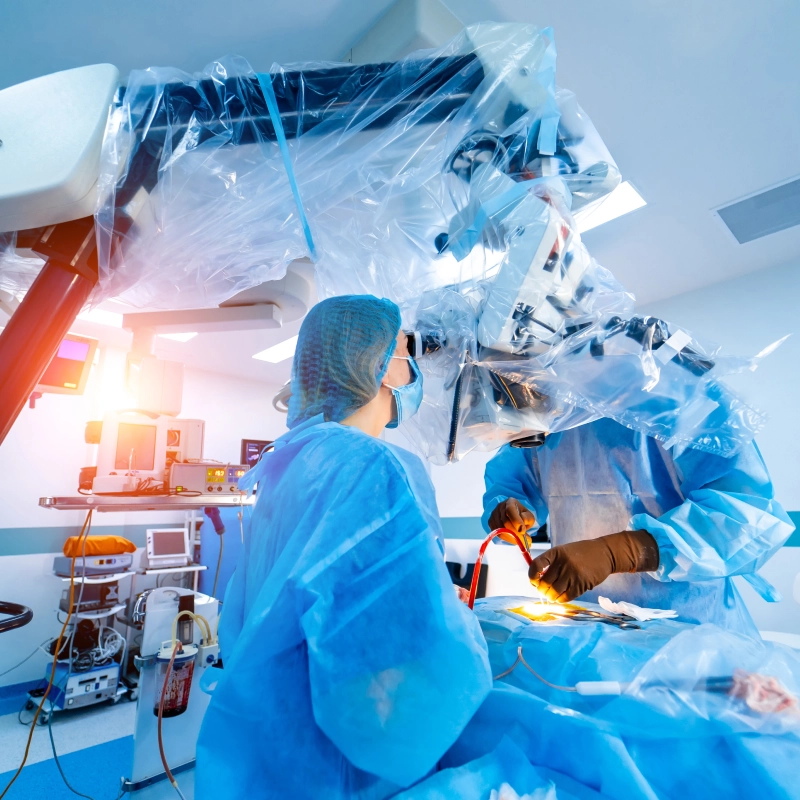Home/Wellness Zone/Sakra Blogs
7th Aug, 2024

Gone are the days when spine surgeries were a cumbersome procedure, an ultimatum for the patient, and meant that they could no longer walk or do any daily activities. Technological advances over the last few decades have rendered spine surgery safe, and efficient and some can even be performed as a daycare procedure. This is even truer for minimally invasive spine surgeries which is the cutting edge of spine surgery at present. It is as the name suggests less invasive to the human body than the traditional open methods of surgery.
Patients presenting to the neurosurgeon with back pain radiating to the legs, walking difficulty, loss of strength or sensory disturbances of the legs or lower trunk, and urinary or fecal problems are evaluated thoroughly. Patients diagnosed with herniated discs, spinal canal stenosis, spondylolisthesis, spondylolysis, spinal tumors, deformities, or fractures of the spine may be offered minimally invasive surgeries if deemed fit by the surgeon. These patients will typically need an X-ray, MRI scan or CT scan alone or in combination for the surgeon to decide if the patient requires surgery and if so, which procedure is to be used for the patient in question.
Once diagnosed with spine disease, the surgeon decides that you require a spine surgery, he will typically recommend a couple of techniques which usually include minimally invasive techniques for the surgery. The patient is selected for these novel techniques dependent on various factors which may be patient-related or surgeon-related. The patient’s complaint severity, location, correlation with findings after the doctor’s examination, presence of other medical diseases such as diabetes, hypertension, heart disorders, intake of medication such as blood thinners, weight and fitness of the patient as well as age play a major role to decide if minimally invasive surgery can be offered. The experience, expertise of the surgeon, availability of equipment, and patient preferences play a significant role in this decision.
In contrast to traditional surgical methods, minimally invasive methods usually involve a smaller surgical incision, typically 1-2 centimeters, therefore there is minimal blood loss during surgery, a smaller scar, and less pain post-operatively leading to shorter periods of rest and faster recovery. However, the quality of surgery is not compromised since technology allows for excellent intraoperative visualization. This method preserves more of the normal anatomy of the back and there is less chance of infection after surgery.
The surgery commonly involves special equipment such as wide-bore needles, dilating tubes, endoscopes, and screws and rods which are specifically designed for minimally invasive surgery. Post-procedure the wounds are either sutured or stuck together with glue depending on the size of the incision. The patient will be required to stay in the hospital anywhere between a few hours to a couple of days depending on the type and extent of surgery. Most procedures are done under general anesthesia with a few exceptions.
There are specific concerns when planning for minimally invasive spine surgery such as the small size of incision which can limit access to the surgical area and visualization. However various adjuncts are available to the surgeon to aid in visualization, accuracy, and speed of minimally invasive surgery. They include intraoperative fluoroscopy (visualization under continuous X-ray), CT or MRI-guided navigation, endoscope, microscope, and robot assistance.
Complications of these surgeries are commonly similar to those of traditional techniques including, persistent pain, bleeding, infection, nerve damage, or leak of cerebrospinal fluid from the surgical site which may necessitate medication, re-surgery, or open surgery. However, the occurrence of these complications is usually less common than in open surgery. The patient recovers faster and can get back to work or rehabilitation much earlier than after traditional surgery.
Enquire Now
